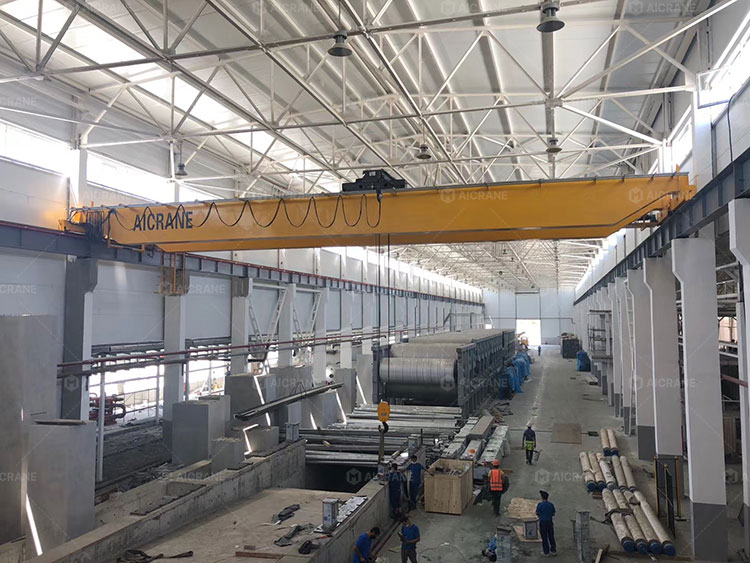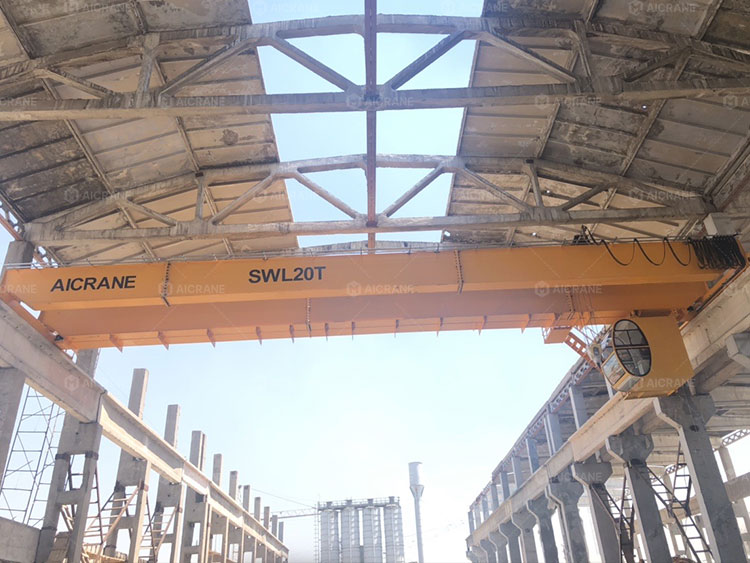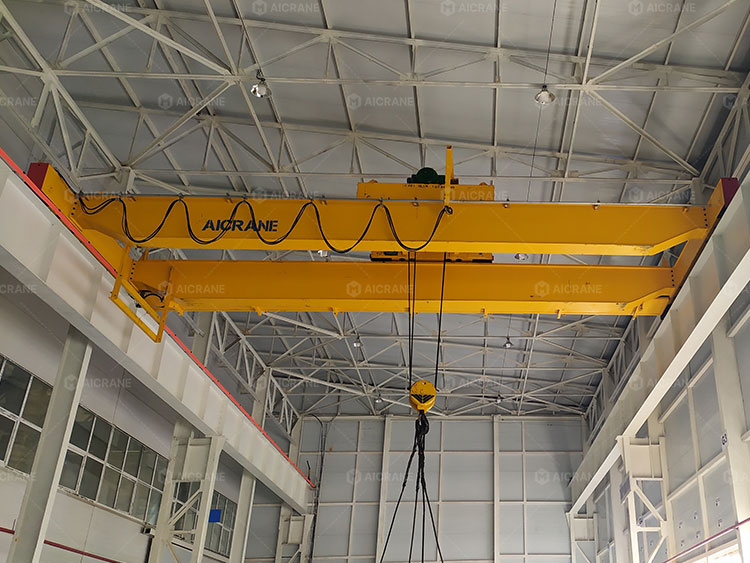When it comes to maintaining the performance and safety of Electric Overhead Traveling (EOT) cranes, timely and effective troubleshooting support is crucial. Whether you operate a crane in a steel plant, a warehouse, a fabrication shop, or a hydropower station, you need fast, reliable service when something goes wrong. A key question every crane owner should ask their manufacturer is: Do you offer online troubleshooting, on-site service, or both? And which one is right for me?
In this article, we’ll dive deep into the differences between online and on-site troubleshooting, what support options you should expect from your EOT crane manufacturer, and how to determine which type of assistance best suits your operation.

Understanding EOT Crane Troubleshooting
Troubleshooting for EOT cranes typically involves identifying and resolving issues with components such as motors, electrical systems, hoists, brakes, limit switches, or software. These issues can lead to crane downtime, production delays, or even safety risks if not addressed promptly. Depending on the severity and nature of the issue, the support you need may differ.
Online Troubleshooting: Speed and Convenience
What Is Online Troubleshooting?
Online troubleshooting refers to remote assistance provided by your EOT overhead crane manufacturer via internet-based communication. This can include:
-
Live video calls or virtual inspections
-
Remote diagnostics using crane monitoring software
-
Technical support via email, phone, or instant messaging
-
Instructional videos and manuals
-
Real-time screen sharing for PLC systems or remote controls
Advantages of Online Troubleshooting
-
Fast Response Time
Online troubleshooting can often be initiated immediately. A technician can assess issues without the delays of travel or scheduling an on-site visit. -
Cost-Effective
There’s no need to pay for technician travel or accommodation, making it more budget-friendly. -
Ideal for Minor Issues
Many common problems—such as sensor misalignment, calibration errors, or resetting overload protection—can be resolved remotely with simple guidance. -
Support in Remote Areas
If your facility is in a rural or hard-to-reach location, online troubleshooting ensures you still get help without waiting days. -
Documentation and Training
Online troubleshooting is often accompanied by documents, diagrams, and videos that help your maintenance team understand the system better for future reference.
Limitations of Online Troubleshooting
-
Not Suitable for Major Mechanical Failures
If the crane has a damaged girder, broken wire rope, or failed motor, online help alone won’t be enough. -
Depends on Internet Access and Skill
Your team needs reliable internet access, basic technical knowledge, and sometimes even diagnostic tools to follow instructions properly. -
Limited Visual Access
Even with video calls, it can be difficult to assess internal issues or complex system interactions.

On-Site Troubleshooting: Hands-On Solutions
What Is On-Site Troubleshooting?
On-site troubleshooting involves a manufacturer’s technician or a certified service partner visiting your facility to inspect and repair the crane in person. This is often essential when:
-
Physical repairs are required
-
Troubleshooting involves electrical rewiring, motor replacement, or component adjustments
-
Your in-house team lacks technical knowledge or experience
Advantages of On-Site Troubleshooting
-
Comprehensive Diagnosis
Technicians can fully inspect the crane’s electrical and mechanical components, often identifying hidden or secondary issues that remote support might miss. -
Physical Repair Capability
When the solution requires hands-on repair – whether adjusting a hoist brake, realigning a runway rail, or replacing a motor – on-site service is irreplaceable. -
Safety Assurance
A qualified technician ensures that all repairs meet safety standards and may even offer an inspection report or certificate after troubleshooting. -
Tailored Training
During the visit, the technician can also train your staff for future maintenance or provide preventive maintenance advice.
Limitations of On-Site Troubleshooting
-
Slower Response Time
It may take 1–3 days or more to schedule and complete a visit, depending on your location and the availability of service engineers. -
Higher Cost
Travel expenses, technician time, and potential parts replacement contribute to higher costs. -
Logistical Delays
Coordinating access to the facility, permits, or crane availability for service can cause delays.

What Should a Good EOT Crane Manufacturer Provide?
The best EOT crane manufacturers understand that both troubleshooting methods are essential and complementary. Here’s what a reliable supplier typically offers:
1. Hybrid Support Model
Leading manufacturers like Aicrane, Konecranes, or Demag provide a mix of both online and on-site troubleshooting services. A hybrid model means:
-
Fast online diagnostics to identify the issue
-
Decision on whether on-site service is required
-
Clear documentation, service reports, and follow-up support
2. Online Technical Guidance
You should expect:
-
Quick response time (within a few hours)
-
Multilingual support for global customers
-
Clear instructions via video calls or email
-
Access to digital manuals and how-to guides
3. Local Service Network
A good manufacturer partners with certified technicians or service centers in your region for faster on-site intervention. Some also offer:
-
24/7 emergency call-out services
-
Regular maintenance contracts with periodic inspections
-
Spare parts inventory near your location
4. Customer Training
Manufacturers may offer training (on-site or remote) for your operators and maintenance crew so they can handle basic troubleshooting independently. This reduces future downtime.
Which Option Is Best for You?
The right troubleshooting method depends on several factors:
| Factor | Online Support | On-Site Support |
|---|---|---|
| Issue Severity | Minor/Moderate | Major |
| Downtime Tolerance | Low | Medium |
| Location | Remote or global | Within service radius |
| Internal Expertise | Skilled staff | Limited skills |
| Budget | Low | High |
In most cases, start with online troubleshooting. If that doesn’t resolve the problem, escalate to on-site service.
Real-World Example: Combining Both Approaches
A manufacturing client using a double girder EOT overhead crane 20 ton reported erratic hoisting performance. Initial online support diagnosed a possible encoder fault. The support team guided the client to run diagnostics and check connections. However, the problem persisted.
Within 48 hours, a technician arrived on-site, replaced the encoder, realigned the encoder disk, and conducted a load test to confirm safe operation. The combination of quick online response and timely on-site intervention minimized the client’s downtime.
Final Thoughts
Don’t wait until you have a crane emergency to ask your EOT crane manufacturer what kind of troubleshooting they provide. In today’s fast-paced industrial world, you need a supplier who offers both online and on-site support, tailored to your specific needs.
When choosing an EOT crane manufacturer, prioritize those with:
-
A responsive online technical team
-
Local service presence or partners
-
Preventive maintenance programs
-
A commitment to long-term customer support
At the end of the day, having both options at your disposal is the best way to ensure minimal downtime, safe operations, and maximum return on investment for your EOT crane system.